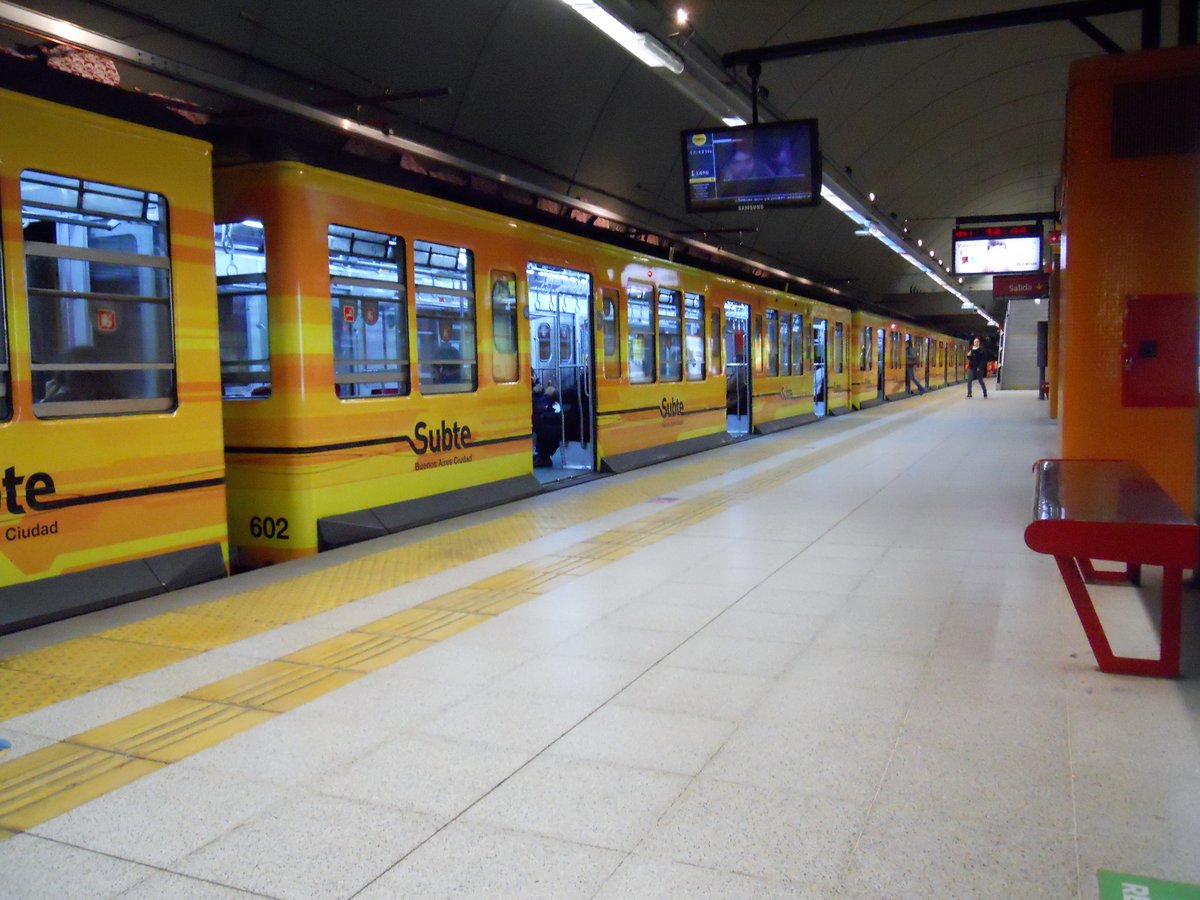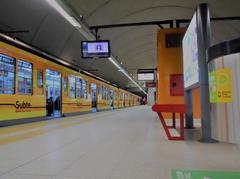
Juan Manuel de Rosas Visiting Hours, Tickets, and Historical Sites in Buenos Aires
Date: 15/06/2025
Introduction to Juan Manuel de Rosas Sites and Their Historical Significance
Exploring the historical sites dedicated to Juan Manuel de Rosas in Buenos Aires offers a fascinating journey through Argentina’s complex 19th-century history. Rosas, a prominent and controversial caudillo, left a lasting mark as governor of Buenos Aires and leader of the Argentine Confederation from 1829 to 1852. His influence extends beyond politics, shaping the very geography of Buenos Aires, where numerous landmarks commemorate his life and legacy.
Visitors can deepen their understanding of Argentina’s political evolution by touring key sites associated with Rosas: the Monumento a Juan Manuel de Rosas in Palermo Woods, the Palermo Rose Garden (El Rosedal) established on his former estate grounds, the Casa de Juan Manuel de Rosas museum in San Andrés, and historic areas like Plaza de Mayo and the Casa Rosada. Each destination offers unique insight into Rosas’ era, his resistance against foreign intervention, and his complex role in shaping national identity.
This comprehensive guide compiles essential information for travelers: visiting hours, ticketing and accessibility, travel tips, nearby attractions, and recommended tours. Whether you are a history enthusiast or a casual visitor, these sites offer both outdoor beauty and rich historical narratives (Buenos Aires Tourism Website, cadaviajeunmundo.com, Museo Histórico Nacional Official Website).
Table of Contents
- Introduction
- Location and How to Get There
- Visiting Hours and Admission
- Historical Background
- Accessibility
- Nearby Attractions
- Guided Tours and Special Events
- Practical Recommendations and Visitor Tips
- Frequently Asked Questions (FAQ)
- Political Legacy and Historical Impact
- Defender of National Sovereignty
- Economic Policies and Social Change
- Cultural Significance and Intellectual Opposition
- Downfall and Exile
- Visiting Rosas-Related Sites in Buenos Aires
- Practical Tips for Tourists
- Rosas in Modern Argentine Identity
- History and Cultural Significance of Juan Manuel de Rosas
- Getting There and Location Details
- Accessibility and Park Rules
- Best Times to Visit
- What to Bring and Wear
- Food, Drink, and Facilities
- Special Events and Seasonal Activities
- Language and Communication
- Souvenirs and Local Experiences
- Environmental and Cultural Etiquette
- Weather Considerations
- Additional Resources
- Conclusion and Call to Action
Location and How to Get There
Most Rosas-related sites are located in and around the Palermo neighborhood, one of Buenos Aires’ most accessible and scenic districts. The Monumento a Juan Manuel de Rosas stands at Avenida del Libertador and Avenida Sarmiento, within the expansive Palermo Woods (Bosques de Palermo). The nearest Subte (metro) station is Plaza Italia on Line D, about a 15-minute walk from the main gardens. Multiple city bus lines and the San Martín train line (Palermo station) provide additional public transport options (cadaviajeunmundo.com).
The Casa de Juan Manuel de Rosas museum is located at Diego Pombo 3324, San Andrés, San Martín, accessible via Mitre Line suburban train or local buses.
Visiting Hours and Admission
- Monumento a Juan Manuel de Rosas: Open-air site, accessible 24/7; free admission.
- Palermo Rose Garden (El Rosedal): Open daily (except Mondays) with seasonal hours; free entry. Check park signage or the Buenos Aires city website for current details.
- Casa de Juan Manuel de Rosas (San Andrés): Tuesday to Sunday, 10:00 AM – 5:00 PM; closed on Mondays. Free admission.
- Museo Histórico Nacional: Tuesday to Sunday, 11:00 AM – 6:00 PM; closed Mondays. Modest entry fee may apply.
- Recoleta Cemetery: 8:00 AM – 6:00 PM daily. Modest entrance fee.
Many historic public squares and sites, such as Plaza de Mayo, are open year-round with free access.
Historical Background
Juan Manuel de Rosas (1793–1877) was a towering figure in 19th-century Argentina, known for his consolidation of federal power, populist leadership style, and resistance to foreign intervention (Nutshell summary). He built popular support among rural and urban lower classes but was also notorious for political repression through the “Sociedad Popular Restauradora,” known as “La Mazorca.” His rule ended after defeat at the Battle of Caseros in 1852, followed by exile in England.
The major sites connected to Rosas include:
- The Monumento a Juan Manuel de Rosas, depicting him on horseback and surrounded by plaques and historical details.
- El Rosedal, occupying the grounds of his former estate and symbolizing Buenos Aires’ transformation from private landholdings to public parks.
- Casa de Juan Manuel de Rosas in San Andrés, preserving artifacts and documents from his rule.
- Plaza de Mayo, the seat of his political power and the site of the Casa Rosada.
Accessibility
Most Rosas-related sites are designed to be accessible:
- Monumento a Juan Manuel de Rosas: Wheelchair-accessible paths and nearby seating areas.
- El Rosedal: Paved paths and ramps, though some areas may be uneven due to historic landscaping.
- Casa de Juan Manuel de Rosas: Partial wheelchair access; contact in advance for details.
- Museo Histórico Nacional: Fully accessible, with audio guides available.
Visitors with mobility concerns can enjoy these sites with minimal barriers. Restrooms and seating are available throughout Palermo Woods and major museums.
Nearby Attractions
- Bosques de Palermo: Expansive parks with lakes, ideal for picnics, jogging, or boat rides.
- Planetario Galileo Galilei: Nearby planetarium with interactive shows.
- Museo de Artes Plásticas Eduardo Sívori: Argentine art museum with a café and bookstore.
- Arcos del Rosedal: Dining and shopping in converted railway arches.
- Recoleta Cemetery: Resting place of many 19th-century figures.
These attractions offer a mix of nature, culture, and history, perfect for a full day of exploration.
Guided Tours and Special Events
Guided tours—on foot or by bike—are available through local operators and often cover multiple sites related to Rosas. On national holidays and commemorative dates, special events and historical reenactments sometimes take place at the monument or in the parks (AllEvents Buenos Aires). Museums like the Museo Histórico Nacional host rotating exhibitions and lectures on Rosas’ era.
Practical Recommendations and Visitor Tips
- Best Times to Visit: Spring (September–November) and autumn (March–April) for pleasant weather and peak rose blooms.
- Transportation: Take advantage of Buenos Aires’ extensive bus, subway, and train network; taxis and ride-sharing apps are also reliable.
- Safety: Palermo and central Buenos Aires are generally safe, but always keep valuables secure and avoid isolated areas after dark.
- What to Bring: Comfortable walking shoes, sun protection, reusable water bottle, and a camera.
- Photography: Allowed at most sites; check museum rules.
- Language: Spanish is the primary language; English is often spoken by guides.
Frequently Asked Questions (FAQ)
Q: Are Rosas-related sites free to enter?
A: Most sites, including the Rosedal and Casa de Rosas, are free; some museums and Recoleta Cemetery may charge a modest fee.
Q: Can I visit these sites year-round?
A: Yes, but check for seasonal hours and holiday closures, especially for museums and the Rosedal.
Q: Are guided tours available in English?
A: Yes, many operators offer English-language tours; book in advance for availability.
Q: Is the Rosedal accessible for visitors with disabilities?
A: Yes, with paved paths and ramps, though some uneven areas exist.
Q: Where can I learn more about Rosas’ historical context?
A: The Museo Histórico Nacional and Casa de Rosas provide in-depth exhibits; guided tours share historical insights.
Political Legacy and Historical Impact
Rosas’ leadership was marked by efforts to unify the Argentine Confederation, resist foreign intervention, and implement protectionist economic policies. He is celebrated as a defender of national sovereignty, particularly for his stance against Anglo-French blockades and the Battle of the Paraná River. Yet, his legacy is also tied to political repression and the suppression of opposition, notably through mechanisms like “La Mazorca.”
Economic Policies and Social Change
Rosas enacted customs laws that stimulated local agriculture and industry, but his annulment of land lease laws and controversial land sales provoked internal unrest. His economic strategies reflect the complexities of nation-building during a time of external pressures and internal division.
Cultural Significance and Intellectual Opposition
Rosas’ era inspired the “Generación del 37,” a group of intellectuals who opposed his authoritarianism and advocated for liberal reforms. Figures like Juan Bautista Alberdi and Domingo Faustino Sarmiento left a lasting impact on Argentina’s political culture (britannica.com).
Downfall and Exile
After his defeat at the Battle of Caseros in 1852, Rosas lived in exile in Southampton, England, until his death in 1877. His fall marked a period of constitutional reform and further political transformation in Argentina.
Visiting Rosas-Related Sites in Buenos Aires
Key Sites:
- Monumento a Juan Manuel de Rosas (Palermo Woods): Open-air, free, accessible 24/7.
- El Rosedal (Rose Garden in Parque Tres de Febrero): Free, open daily except Mondays, features 18,000 rose bushes.
- Casa de Juan Manuel de Rosas (San Andrés): Free, open Tuesday–Sunday, features artifacts and documents.
- Plaza de Mayo and Casa Rosada: Central historical square, site of political events in Rosas’ era.
- Recoleta Cemetery: Burial site of many contemporaries.
Complementary Museums:
- Museo Histórico Nacional: Exhibits on Rosas and 19th-century Argentina, located in San Telmo.
Best Times to Visit
The Rosedal is at its most beautiful during spring (September–November) when the roses are in full bloom. July features an annual pruning festival where visitors can take home rose cuttings (cadaviajeunmundo.com). Early mornings and weekdays offer a quieter experience.
Food, Drink, and Facilities
Public restrooms are available throughout Palermo Woods and near main attractions. The Arcos del Rosedal area offers cafés and restaurants. Picnicking is permitted in the parks, but not inside the Rosedal.
Language and Communication
Most signage is in Spanish; some English translations are available at major sites. Guided tours in English are offered by many operators.
Souvenirs and Local Experiences
The Museo Sívori bookstore near the Rosedal sells art books and unique gifts. The July pruning festival offers rose cuttings as a memorable keepsake.
Environmental and Cultural Etiquette
Help preserve the parks by following posted rules: no picking flowers, littering, or disturbing wildlife. Pets and bicycles are not allowed inside the Rosedal. Respect the historic and cultural significance of each site.
Weather Considerations
Buenos Aires enjoys a temperate climate: hot summers (up to 30°C/86°F) and mild winters (around 15°C/59°F). Rain is possible year-round; check forecasts and bring an umbrella if necessary (wanderlog.com).
Additional Resources
- Buenos Aires Tourism Website
- Museo Histórico Nacional Official Website
- Guided Tours Booking
- AllEvents Buenos Aires
- cadaviajeunmundo.com
- wanderlog.com
Conclusion and Call to Action
The Juan Manuel de Rosas sites in Buenos Aires offer a powerful blend of history, culture, and natural beauty. From the historic monument in Palermo Woods to the vibrant Rosedal and insightful museums, each destination illuminates a pivotal chapter in Argentina’s story. Free or affordable access, accessible paths, and engaging guided tours make these sites ideal for all visitors.
To plan your visit, leverage resources like the Buenos Aires Tourism Website and the Audiala app for guided tours, maps, and real-time updates. Check local calendars for seasonal events and commemorations that can enrich your experience. Whether you’re a history aficionado or a first-time traveler, exploring Rosas’ legacy will connect you to Argentina’s dynamic past and enduring spirit.
Ready to explore? Download the Audiala app for access to guided tours and the latest visitor information. Follow us on social media for more travel tips and historical insights!
References and Further Reading
- Guide to Buenos Aires Landmarks, 2025, Buenos Aires Tourism Website (https://turismo.buenosaires.gob.ar/en)
- Visiting Rosedal de Palermo - 18,000 Roses Within Reach, 2025, cadaviajeunmundo.com (https://cadaviajeunmundo.com/rosedal-de-palermo-18-000-rosas-al-alcance-de-tu-mano/)
- Museo Histórico Nacional Official Website, 2025 (http://www.museohistoriconacional.gob.ar)
- AllEvents Buenos Aires, 2025 (https://allevents.in/buenos-aires/june)
- The Rise and Fall of Juan Manuel de Rosas in Argentina, 2025, Nutshell Summary (https://www.nutshellapp.com/publicsummaries/the-rise-and-fall-of-juan-manuel-de-rosas-in-argentina)
- Guided Tours Booking, 2025, GoAskALocal (https://goaskalocal.com/tours)
- wanderlog.com
- britannica.com






























































































































































